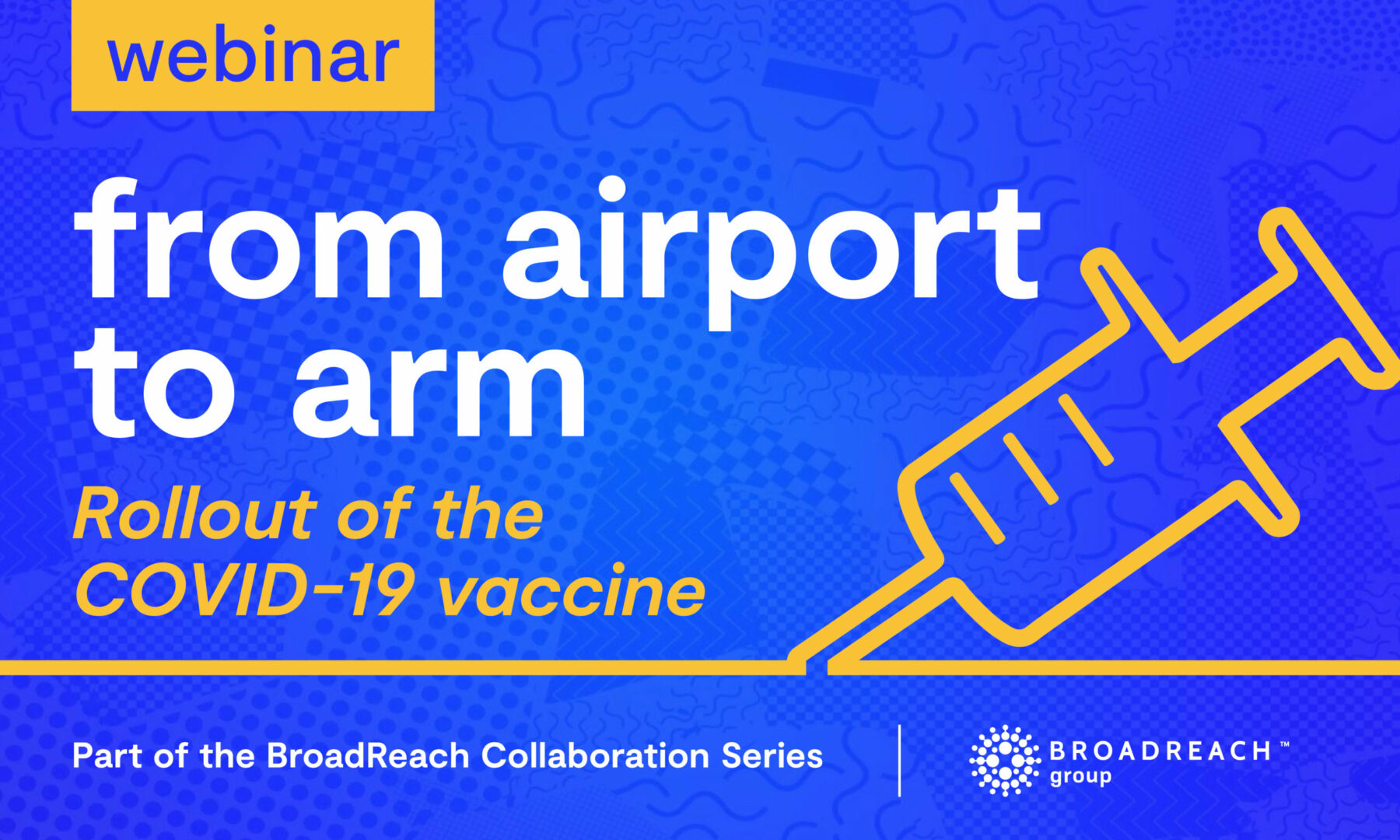Global and African vaccine experts join BroadReach Group webinar to address mass vaccination rollout concerns and solutions
Webinar in summary:
- Mass immunizations must be treated as a multi-year marathon, and vaccine hesitancy must be addressed before herd immunity can be achieved. – Dr Tim Mastro, chief scientist at FHI 360
- Health authorities must share vaccine rollout information with the public in layman’s language to increase trust and acceptance – Dr Anban Pillay, SA Health Department.
- All countries must have national vaccine deployment plans that enable detailed planning. – Dr Phionah Atuhebwe, World Health Organization (WHO) Africa Region
To defeat the pandemic at scale, health authorities need to invest in micro-planning on the ground, as well as a global control tower approach backed by digital resources and data management – Dr Ernest Darkoh, BroadReach Group co-founder.
BroadReach Group, a global social enterprise focused on harnessing health technology and innovation that empowers human action brought key global and African health experts together yesterday to share challenges and solutions around mass COVID-19 immunization across Africa.
Dr Tim Mastro, Chief Science Officer at FHI 360, a respected international nonprofit human development organization, said the major challenges for 2021 included inequitable COVID-19 vaccine distribution between rich and poor, different viral variants, and vaccine hesitancy.
Massive advances in vaccine science over the past year offered hope, but the global community needed to learn from its mistakes with inequitable HIV care access 20 years ago, as well as the advances made in ever-evolving annual influenza vaccinations.
“If we do things right with research and investment for COVID vaccines, we could have greatly improved vaccines down the road. One vision would be that we have universal vaccines for all Coronaviruses and flues – that’s something vaccine science can deliver.”
Responding to international research findings that only three out of four people were willing to be vaccinated, FHI 360 developed a simple three-step guide to help health authorities win public trust for their vaccine programs.
Dr Phionah Atuhebwe, an award-winning public health specialist and new vaccination medical officer with WHO Africa Region, said there were three ways in which African countries could access vaccines:
- The WHO and CEPI GAVI’s COVAX initiative, the fastest route, pooled demand to accelerate manufacturing and ensured enough supply for 20% of Africa’s population
- The African Union’s Africa Vaccine Allocation Task Team (AVATT) which was securing 670 million doses for Africa
- Countries’ bilateral agreements with vaccine manufacturers
Atuhebwe said equitable distribution, national regulations, population targeting and vaccine hesitancy were the four greatest barriers to vaccine distribution and acceptance in Africa. Countries had to explore emergency use authorization avenues, and adopt detailed national vaccine deployment plans which included details such as their target populations, vaccination schedules, chains of command, provisions for special import permits and indemnity agreements with manufacturers, so that they could do crucial “micro-planning”.
Dr Anban Pillay, Deputy Director-General of the South African National Department of Health, said they were in talks with all the major vaccine providers, and their advisory committee was reviewing the efficacy and practicalities of all vaccines in the context of the SA variant and other factors such as HIV prevalence. The government had national committees for vaccine selection, rollout, distribution, administration and communications, and consulted with stakeholders in the private and public sectors, associations of professionals, labor unions and civil society.
The South African government prioritized choosing vaccines that would be effective against the South African variant and prevent hospitalizations and mortality. His department also prioritized communicating with the public in non-science language to increase vaccine trust and acceptance.
Pillay was adamant about the importance of electronic data management to monitor supply, vaccine uptake and coverage, and adverse events – a vital tool that was not available during previous pandemics.
South Africa would be vaccinating about 1.2 million health workers in Phase 1, a much bigger group including the elderly and those with comorbidities in Phase 2, and would launch mass vaccinations by the third quarter of 2021, Pillay said.
Dr Ernest Darkoh, co-founder of BroadReach, Schwab Foundation board member and TIME Magazine health hero, said achieving herd immunity quickly was a massive logistical feat that required pragmatic micro-planning. This entailed proper cold chain and storage management, ensuring that vaccines were handled and prepared timeously and correctly, that staff arrived early enough to prepare vaccines before patients arrived, that patients arrived on schedule, that syringes were safely disposed of, and that proper electronic records were kept along every step of the process so that rollouts could be managed well on the macro and micro levels.
“At BroadReach we’ve been obsessed with what makes programmes tick on the ground on a Monday morning at a large scale. When the vaccines arrive in pallets at the airport, that is where the real challenges begin. Staff must be trained on all aspects, including technology, and you must conduct dry runs before vaccine arrival.”
The Africa Centers for Disease Control (CDC) target of 780 million vaccinations over the next 12 months would require 3.5 million doses a day for a single dose, or 7 million a day for a double dose. “A vast number of factors have to go right for that to work.”
“We need countries to urgently invest in integrated digital and data solutions early on, and not when they are already in crisis mode, in the worst heat of the fire. Paper causes major issues.”
“Essentially, we’re not developing all of these things just for COVID – we need it for all diseases. We need a global control tower approach. Don’t make COVID another vertical disease program, use it as an opportunity to improve all major healthcare systems for the future.”

